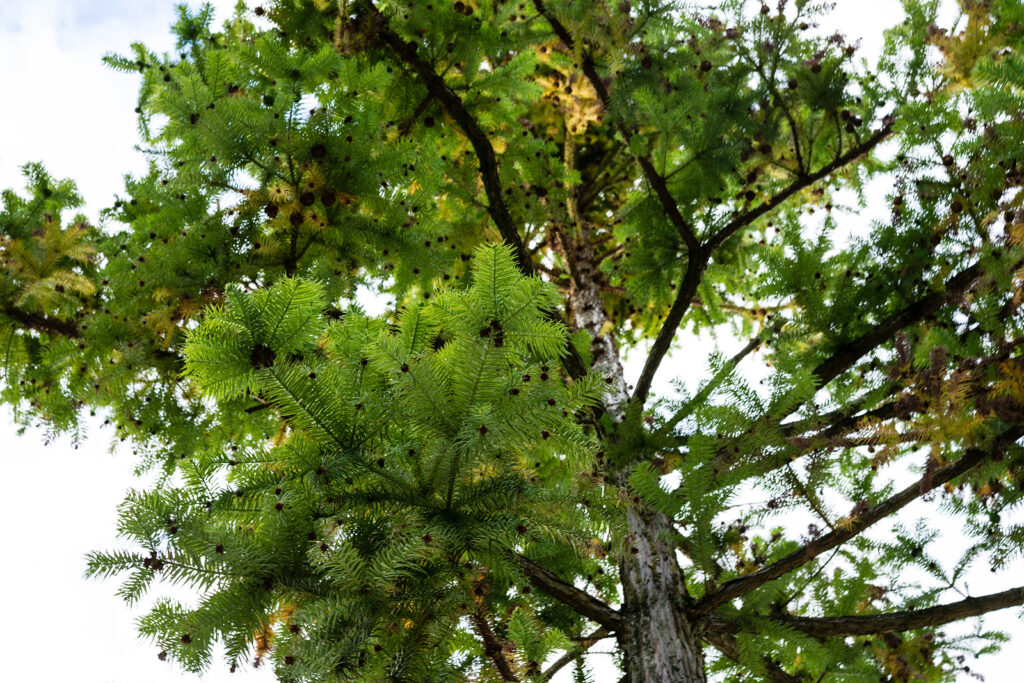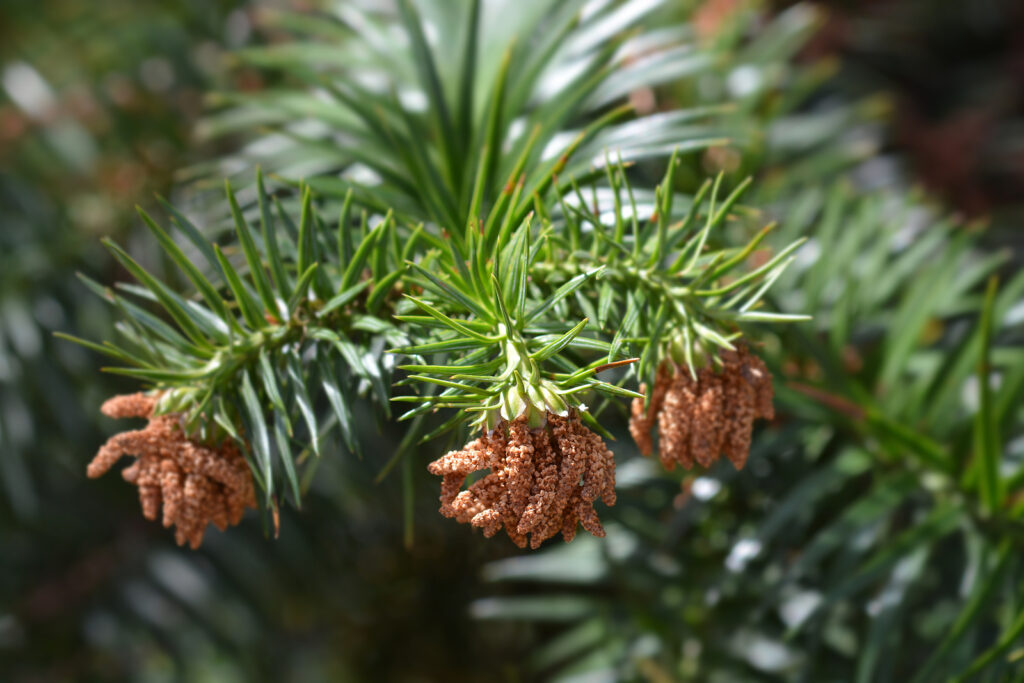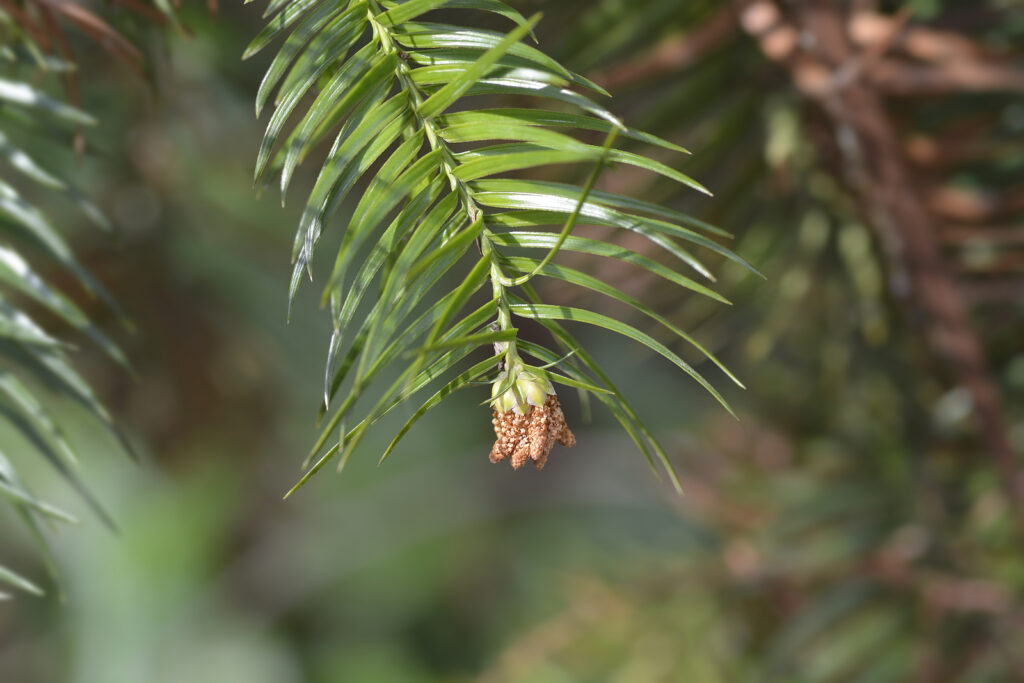Cunninghamia, commonly known as China fir, is a stunning, slow-growing conifer prized for its beautiful, soft, and glossy foliage with a blue-green tint. This evergreen tree, native to China, is popular in gardens and landscapes for its striking pyramid shape, tough adaptability, and low maintenance needs. Known for its unique texture and excellent drought tolerance once established, Cunninghamia adds architectural interest to both formal and naturalistic garden settings.
Cunninghamia lanceolata is the primary species in this genus, belonging to the Cupressaceae family. It typically grows between 50 to 100 feet in its native range but often stays around 30 to 60 feet in cultivation. Its soft, flexible, needle-like leaves grow in a spiral pattern along the branches, offering a feathery look that is rare in most other conifers. The foliage color varies from deep green to a bluish or silvery-green, depending on the season and the tree’s exposure to light.
China fir’s resilience, moderate growth rate, and ability to withstand both sun and partial shade make it suitable for USDA hardiness zones 7 through 9. While it may not be the ideal choice for smaller gardens due to its eventual size, it serves as a stunning specimen tree or a valuable addition to larger landscape designs.

Where to Plant Cunninghamia
Cunninghamia is adaptable to a variety of sites but requires certain conditions to grow well:
- Sunlight: Full sun to partial shade. It performs best in full sunlight but can tolerate some light shade, especially in warmer climates.
- Soil Type: China fir thrives in well-draining, slightly acidic to neutral soil. Though it tolerates various soil types, including loamy, sandy, and clay soils, poor drainage can lead to root issues.
- Spacing: Given its mature size, plant China fir at least 15 to 20 feet away from other large trees or structures, allowing it ample space to spread.
How to Plant Cunninghamia Step-by-Step
- Timing: Plant in early spring or fall when temperatures are mild and there’s ample rainfall to support root establishment.
- Digging the Hole: Dig a hole that’s twice as wide and the same depth as the root ball. This allows the roots to spread out easily without being buried too deeply.
- Amend the Soil: While Cunninghamia doesn’t need heavy soil amendments, adding a bit of compost can improve poor soils and boost initial root growth.
- Planting: Place the tree in the hole, ensuring it’s upright and at the same soil level as it was in its container. Backfill the hole with soil, pressing gently to eliminate air pockets.
- Watering: Water thoroughly after planting to help settle the soil and hydrate the roots.
Mulching
Apply a 2-3 inch layer of organic mulch, like pine bark or wood chips, around the base of the tree, keeping it a few inches away from the trunk. Mulch helps retain moisture, suppress weeds, and regulate soil temperature, which is especially beneficial during the first growing season.

Caring for Cunninghamia
Watering
During its first year, Cunninghamia requires consistent watering to establish a strong root system. Once established, it becomes fairly drought-tolerant but benefits from occasional deep watering.
- Young Trees: Water once a week, especially in dry periods, until well-established.
- Mature Trees: Water only during prolonged drought, as mature trees are better equipped to withstand dry spells.
Fertilizing
China fir doesn’t require regular fertilization if planted in moderately fertile soil. However, if your soil is particularly nutrient-poor, apply a balanced, slow-release fertilizer in early spring to encourage healthy growth.
Pruning
Cunninghamia has a naturally beautiful shape, with minimal need for pruning. However, occasional pruning can improve its appearance and health:
- Shape Control: Prune back any dead, damaged, or awkwardly growing branches in late winter or early spring.
- Lower Branch Removal: If growing China fir as a specimen tree with visible trunk, remove lower branches gradually as it matures to showcase the attractive bark.
Pest and Disease Management
Cunninghamia is relatively pest- and disease-resistant, which adds to its low-maintenance appeal. Occasionally, it may face minor issues such as:
- Scale Insects: If scales appear on the branches, treat with horticultural oil or insecticidal soap.
- Root Rot: Poor drainage can lead to root rot, so ensure well-draining soil and avoid waterlogged planting sites.

Propagation of Cunninghamia
While Cunninghamia can be propagated from both seeds and cuttings, cuttings are generally more reliable and quicker to establish.
- From Seeds: Collect seeds in autumn when cones are mature. Sow seeds in a well-draining seed-starting mix, covering lightly with soil. Keep moist until germination.
- From Cuttings: Take 4-6 inch semi-hardwood cuttings in late summer, dip in rooting hormone, and plant in moist, well-draining soil. Place in a sheltered location and keep humidity high until roots develop, which may take several months.
Using Cunninghamia in the Garden
China fir’s elegant structure and dense, soft foliage make it an attractive focal point in various garden styles. Here are some creative ways to incorporate Cunninghamia into the landscape:
Specimen Tree
With its distinctive, pyramidal form, Cunninghamia makes a striking specimen tree in larger gardens. Plant it as a standalone feature where its full beauty can be appreciated, allowing space for its broad spread and height.
Woodland and Shade Gardens
Cunninghamia’s adaptability to partial shade makes it a valuable addition to woodland gardens. Its lush, evergreen foliage provides year-round interest among deciduous trees and contrasts well with shade-loving plants like ferns, hostas, and shade-tolerant flowering shrubs.
Windbreaks and Privacy Screens
While it’s slower-growing than some hedging plants, Cunninghamia can be used effectively as a windbreak or privacy screen in larger landscapes. Plant in a row to create a dense barrier that remains green year-round and shields from wind and prying eyes.
Mixed Borders
China fir’s unique texture and blue-green color provide a lovely contrast in mixed borders. Plant alongside perennials, grasses, and other shrubs for a diverse, layered look. It pairs beautifully with flowering plants, as its evergreen backdrop enhances seasonal blooms.
Coastal and Dry Gardens
In warmer coastal regions where salt tolerance is needed, Cunninghamia can be an excellent addition. Its drought tolerance, once established, also suits xeriscapes and dry gardens, where it can grow as a standalone feature or alongside other drought-tolerant species.
Benefits of Using Cunninghamia in the Landscape
- Year-Round Interest: Cunninghamia offers vibrant color and texture throughout all seasons, providing structure and depth to the garden.
- Drought Tolerance: Once established, this tree requires minimal watering, making it ideal for low-water landscapes.
- Adaptability to Various Soils: China fir’s ability to thrive in both sandy and clay soils, as long as they’re well-draining, broadens its planting potential.
- Deer Resistance: Cunninghamia’s tough, fibrous foliage makes it less appealing to deer, adding to its appeal in areas where deer are common.
- Wildlife Habitat: Its dense branches provide shelter for birds, especially in winter, contributing to a wildlife-friendly garden.
Potential Challenges and Considerations
While Cunninghamia is a versatile and low-maintenance tree, here are a few things to keep in mind:
- Size: China fir can grow quite large over time, which may not suit small gardens. Ensure adequate space for its mature size.
- Slow Growth: Though this slow growth is an asset for low-maintenance landscapes, it can be a drawback if a quick screen or shade is needed.
- Needle Drop: Like many conifers, Cunninghamia sheds older needles as new growth emerges. This needle drop is usually minimal and can be managed with occasional cleanup.
- Sensitive to Poor Drainage: Good drainage is crucial. Avoid heavy, compacted soils or areas that tend to hold water.
Recommended Cunninghamia Varieties
While Cunninghamia lanceolata is the primary species, a few cultivated varieties have unique forms or colors:
- Cunninghamia lanceolata ‘Glauca’: Known for its striking blue-gray foliage, this variety adds extra visual interest.
- Cunninghamia lanceolata ‘Green Pencil’: A dwarf variety with a compact, upright growth habit, ideal for smaller gardens or container planting.
Cunninghamia Summary
Cunninghamia, or China fir, is a beautiful evergreen that combines resilience, elegance, and low maintenance. Its pyramidal form and unique, soft foliage make it a valuable addition to various garden styles, from woodland landscapes to formal plantings. With simple care and thoughtful placement, Cunninghamia can enhance the garden’s year-round structure and color, providing both beauty and function in larger landscapes.
When planted as a focal point, windbreak, or part of a mixed border, Cunninghamia shines as a long-lasting, adaptable evergreen with minimal needs once established. Whether used in a traditional garden setting, as a specimen tree, or even in coastal landscapes, Cunninghamia brings a touch of elegance that’s hard to match.



